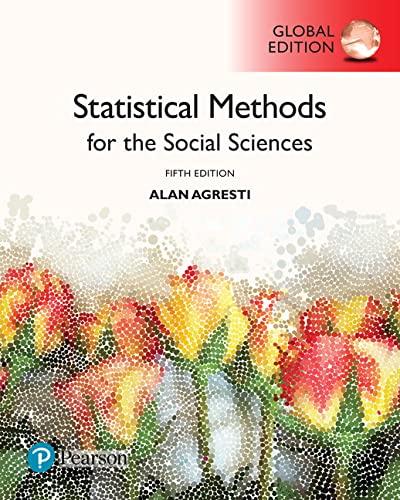The General Social Survey has asked subjects to rate various groups using the feeling thermometer. The rating
Question:
The General Social Survey has asked subjects to rate various groups using the “feeling thermometer.” The rating is between 0 and 100, more favorable as the score gets closer to 100 and less favorable as the score gets closer to 0. For a small data set from the GSS, Table 11.17 shows results of fitting the multiple regression model with feelings toward liberals as the response, using explanatory variables political ideology (scored from 1 = extremely liberal to 7 = extremely conservative) and religious attendance, using scores (1 = never, 2 = less than once a year, 3 = once or twice a year, 4 = several times a year, 5 =
about once a month, 6 = 2–3 times a month, 7 = nearly every week, 8 = every week, 9 = several times a week).
(a) Report the prediction equation and interpret the ideology partial effect.
(b) Report, and explain how to interpret, R2.
(c) Tables of this form often put * by an effect having P < 0.05, ** by an effect having P < 0.01, and *** by an effect having P < 0.001.
Show how this was determined for the ideology effect. Explain the disadvantage of summarizing in this manner.
(d) Explain how the F-value can be obtained from the R2-
value reported. Report its df values, and explain how to interpret its result.
(e) The estimated standardized regression coefficients are −0.79 for ideology and −0.23 for religion. Interpret.
TABLE 11.17 Variable Coefficient Std. Error Intercept 135.31 Ideology −14.07 3.16**
Religion −2.95 2.26 F 13.93**
R2 0.799 Adj. R2 0.742 n 10
Step by Step Answer:

Statistical Methods For The Social Sciences
ISBN: 9781292220314
5th Global Edition
Authors: Alan Agresti






